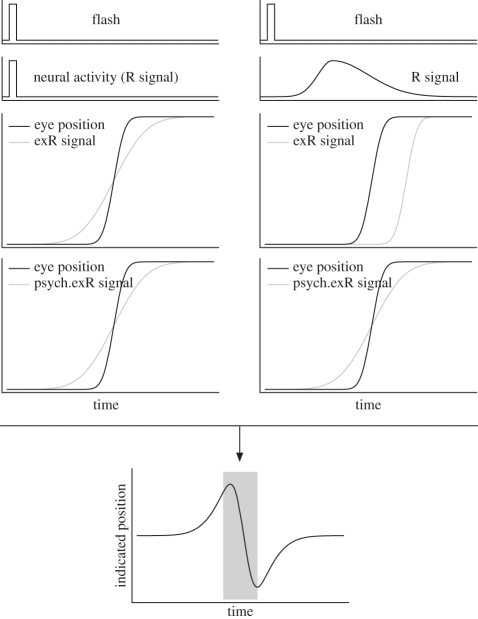Figure 2.
Two different models of spatial localization by subtraction. They address how the interaction between the retinal signal of a flash and an extraretinal eye position signal can predict peri-saccadic shift following Honda [6] (left) and Pola [63] (right). In the model on the left, the retinal signal of the flash (R signal) is assumed to match the flash in timing and duration. The extraretinal eye position signal (exR signal) is assumed to be anticipatory but sluggish, i.e. it starts to develop before the true eye movement onset but does not arrive at the true final eye position until after the saccade is finished. Therefore, as shown in the centred bottom graph, the flash is mislocalized first in and later against the saccade direction. In the model on the right, the flash leads to retinal activation that has a certain onset latency and that lasts much longer than the flash itself. The extraretinal eye position signal is assumed to be faithful representation of the actual eye movement but also arriving in the system with a certain delay. The combination of the two signals leads to the same prediction as the model on the left, namely a mislocalization that is first in and then against saccade direction.

